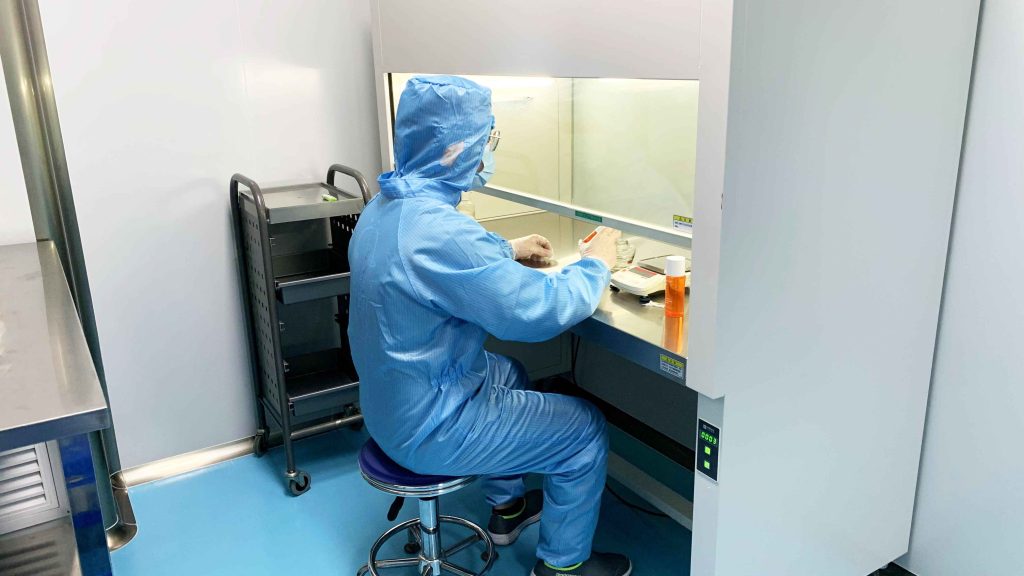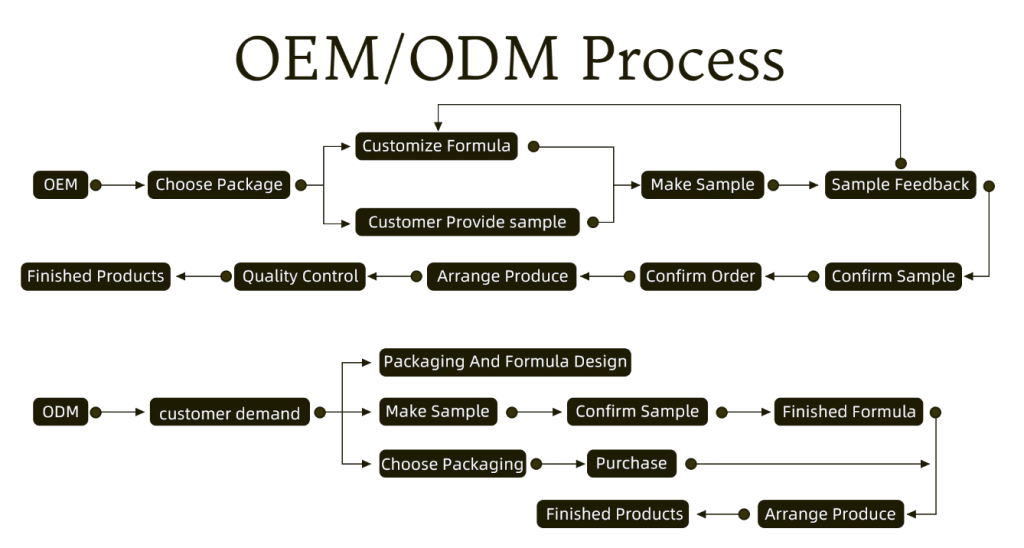The beautiful landscape is changing quickly. Adios to the homogenized trend-based beauty world because today’s beauty market is all about localization, personalization, and climate-based choices. Since skincare is now all about personal and accurate, brands that intend to go global will have to look beyond borders.
Two markets in particular that shine when it comes to emerging trends are Southeast Asia and the Middle East. These markets are growing rapidly and dictating the future of skincare in very different ways. In terms of ingredients to texture, these consumers desire products that cater to their religion, surroundings, and routine.
So, how exactly do these hot beauty markets differ? And how skincare companies — namely OEM and ODM manufacturers — can get their formulations right.
To comprehend that, we must initially examine the numbers.
Data Insights: Understanding the Beauty Boom
Now that we have that introduction behind us, let’s examine in greater detail what is spurring growth in the Middle East cosmetics and Southeast Asian foreign trade cosmetic markets.
Middle East Beauty Market Overview
The Middle East is also among the new contributors to the cosmetic world. The Middle Eastern beauty market is estimated to hit over $60 billion by 2025, at an annual growth rate of approximately 10%. Saudi Arabia and the UAE lead in this phenomenon.
What is behind this boom? Middle Eastern consumers increasingly spend money on beauty, and there is very high demand for local relevance, skincare level quality, as well as for luxury. In fact, over 50% of their beauty spending goes to skincare and perfumes. Hydrating, anti-aging, and suntanning products have particularly high demand.
Southeast Asia’s sudden rise
In addition to that, Southeast Asia is also doing very well — with an estimated beauty market value of $35 billion. The fastest-developing countries in that area include Vietnam and Indonesia.
One such force in play here is Asia’s tech-infatuated, youthful consumer base. Consumers are socialized, online buyers. According to GlobalData, 66% of Asia-Pacific consumers desire skincare that has “high-quality ingredients” that work, are natural, and gentle.
Another significant shift is in payments. Cash on delivery is decreasing in the Middle East, whereas in Southeast Asia, “Buy Now, Pay Later” is rapidly becoming a popular payment method — 40% of consumers are already using it.
Challenges Facing Foreign Beauty Brands
Well, if both markets are expanding so rapidly, why is it that so many overseas brands still fold?
The Repurchase Problem
About 78% of online skincare companies have less than 20% repurchase rates. That is to say, most customers don’t buy from them again after their first purchase. Why? Various massive issues:
- They are not appropriate for local weather or skin type demands
- The payment and shipping options seem strange.
- The branding does not represent local values or culture.
Gaps can quickly lead to lost trust and lost business.
This is where services such as OEM and ODM step in. By means of an appropriate b2b cosmetics supplier, companies can create products that look, feel, and act in ways that local buyers prefer. This can range from ingredients, to packaging, even scent.
Halal, climate, and customization
Halal is not even an option anymore in the Middle East — it’s the minimum. And both regions offer unique weather situations: the dry heat of the Middle East and the heat and humidity of Southeast Asia. Your product has to survive in those kinds of weather if it’s going to survive at all — and if it can’t, clients will just go elsewhere.
Couple that with non-compliance costs on the rise (30% year-over-year growth), and now you know why customization at the local/regional level is no longer nice to have. It is now a must-have.
So, what is it that local consumers want? Let’s examine more closely the winning ingredients in every region.
What’s in the Bottle? Regional Ingredient Preferences
When it comes to skincare products, the most popular skincare ingredients in Southeast Asia and in the Middle East vary greatly. What will work wonderfully in one place might not work in another.
Let’s do it region by region.
Middle Eastern skincare routine
The Middle Eastern beauty routine is all about high moisturizer, high protection from the sun, and thick anti-aging treatments. Moisturizing is needed due to warm weather, which is accompanied by dryness. The culture demands naturally derived ingredients that are safe and non-harmful.
| Ingredient Type | Preferred Ingredients | Reason |
| Moisturizing | Hyaluronic acid, ceramide, squalane | Combat dryness and lock in moisture |
| Sunscreen | Zinc oxide, titanium dioxide, chemical sunscreen | Protect skin from intense UV rays |
| Anti-aging | Collagen, retinol, peptides | Reduce wrinkles, improve firmness |
| Natural Additions | Rose oil, aloe, plant-based oils | Gentle, trusted, and culturally valued |
It’s results-driven as well. Consumers also look for their skincare to include pampering. Therefore, product formats like creams, essence oils, and high-end serums dominate this category.
Southeast Asia skincare priorities
Now, we shift to Southeast Asia, where humidity and heat rule the day, and skin care needs are quite different.
| Ingredient Type | Preferred Ingredients | Reason |
| Oil Control | Salicylic acid, witch hazel, green tea | Regulate oil and prevent clogged pores |
| Acne Treatment | Tea tree oil, Centella asiatica | Calm inflammation, heal breakouts |
| Whitening/Brightening | Niacinamide, vitamin C, arbutin | Brighten and even skin tone |
| Natural Soothers | Aloe vera, coconut oil, rice extract | Moisturize gently and soothe sensitivity |
Here, consumers prefer light, aqueous textures such as gels and lotions. Luxurious creams simply won’t cut it in warm weather. And simple, streamlined packaging, environmental considerations, and reasonable prices also set brands apart.
It’s here that we arrive at an enormous question: What happens when brands have all the right ingredients in the right proportions?
Top-selling Skincare Recipes: What’s Successful & Why
Let’s look at the kinds of formulas that are selling where and why.
Formulas for Middle Eastern Cosmetics
In the Middle East, best-selling formulas often play three primary roles:
- Hydration (hyaluronic acid, ceramide)
- Sun protection (zinc oxide, titanium dioxide)
- Anti-aging ingredients (retinol, peptides)
Top brands here also incorporate natural beauty ingredients like argan oil or rose oil to add to the product’s beauty. Not to mention, naturally, that they don’t forget packaging — gold trim and elegant bottles certainly make all the difference.
These products are an embodiment of the area’s enthusiasm for safe, efficient, and luxurious skincare, produced by trustworthy Middle East b2b cosmetic suppliers.
Winning Formulas for Southeast Asian Foreign Trade Cosmetics
In Southeast Asia, meanwhile, the best combinations match
- Oil control and acne treatment (tea tree oil, salicylic acid)
- Whitening and brightening (niacinamide, vitamin C)
- Soothing hydration (aloe vera, rice water)
They come in minimal, Instagram-friendly packaging. The texture is everything — sticky or oily is a total no-go. Top sellers in this category are lightweight lotions and cooling gels.
For brands that collaborate with a Southeast Asia b2b cosmetics supplier, these finer details all have their place.
BonnieCo focuses on the research and development of high-quality skin care and hair care products that match the Middle East and Vietnam markets. Click to learn more
Why BonnieCo Creates Successful Products
Now that we understand what is needed by each region, let’s see how BonnieCo assists brands in making that happen, with actual, tailored solutions.
Understanding local markets
BonnieCo does not guess — we research. We understand that climate, culture, and consumer behavior drive demand in both Southeast Asia as well as in the Middle East. We talk to on-the-ground consumers and retailers in advance, before priorities, concerns, and tastes.
This enables us to create formulas that have been custom-made to suit every department, not replicated from another.

Outstanding OEM and ODM
From startup to worldwide brand, we help businesses design products from scratch with our ODM and OEM services. We guide partners through:
- Formulation development
- Ingredient choice
- Packaging design
- Manufacturing and Logistics
We possess 30+ high-end manufacturing equipment and varying batch sizes that allow us to offer all one-stop service — from concept to shelf.

Real-world success stories
For the Middle East, we developed an anti-aging moisturizing cream that used hyaluronic acid, rose essential oil, and retinol. The product led all products in terms of premium packaging and performance.
In Southeast Asia, we helped introduce a whitening and acne-controlling lotion with salicylic acid, tea tree oil, and niacinamide that became one of their best-selling SKUs.
These anecdotes demonstrate that customization leads to bonding and sales.
Conclusion
The world today’s skincare is not local — it is local and multilayered. In order to survive in emerging markets like Southeast Asia and the Middle East, brands must create formulations that speak in the local language — through ingredients, texture, and values.
With professional guidance from the correct kind of b2b cosmetic partner, such as BonnieCo, even troubled brands can survive. Need to find a Middle East b2b cosmetic company or Southeast Asia b2b cosmetic company? Always remember: authentic results emanate from customization, not duplication.
If you’re willing to create products that speak to your market, BonnieCo’s one-stop service, ODM, and OEM solutions can assist in making that happen.
BonnieCo, with over 15 years of experience in cosmetics manufacturing and private-label services, specializes in providing OEM/ODM one-stop solutions for your skin and hair care products.
Frequently Asked Questions (FAQs)
1. Which skincare ingredients were most in demand in the Middle East’s beauty market?
In Middle Eastern skincare, hyaluronic acid, ceramide, and retinol are consumer-preferred for aging as well as for maximum hydration. Physical sunscreens, such as zinc oxide, have also been in high demand because of the region’s high sun exposure.
2. How does the Southeast Asian climate affect the formulation of skincare products?
In Southeast Asia’s trade in terms of foreign cosmetics, hot weather in conjunction with high humidity creates an urgent demand for products in acne-controlling and oil-controlling varieties that have tea tree oil and salicylic acid. Southeast Asia’s light, aqueous-based products perform quite well.
3. Why is BonnieCo a reliable OEM/ODM skincare partner for overseas brands?
We offer end-to-end OEM as well as ODM services from formulation to manufacturing, including packaging. We keep ourselves abreast with local fashion trends in order to make brands thrive in Middle Eastern as well as Southeast Asian cosmetic markets.
4. What are some of the different popular skincare ingredients in Southeast Asia versus the Middle East?
Skincare ingredients that lead in the Middle Eastern markets emphasize anti-aging and hydration, but Southeast Asian consumers desire whitening and oil control. Ingredient choice as well as texture in both markets is driven by local tastes.
5. Is BonnieCo providing a one-stop service for B2B cosmetic projects?
Yes. BonnieCo is your trusted, single-source B2B cosmetic partner, from concept to production. Whether one needs to have a Middle East b2b cosmetic manufacturer or have a Southeast Asia b2b cosmetic manufacturer, we make one’s product consumable in the marketplace.



